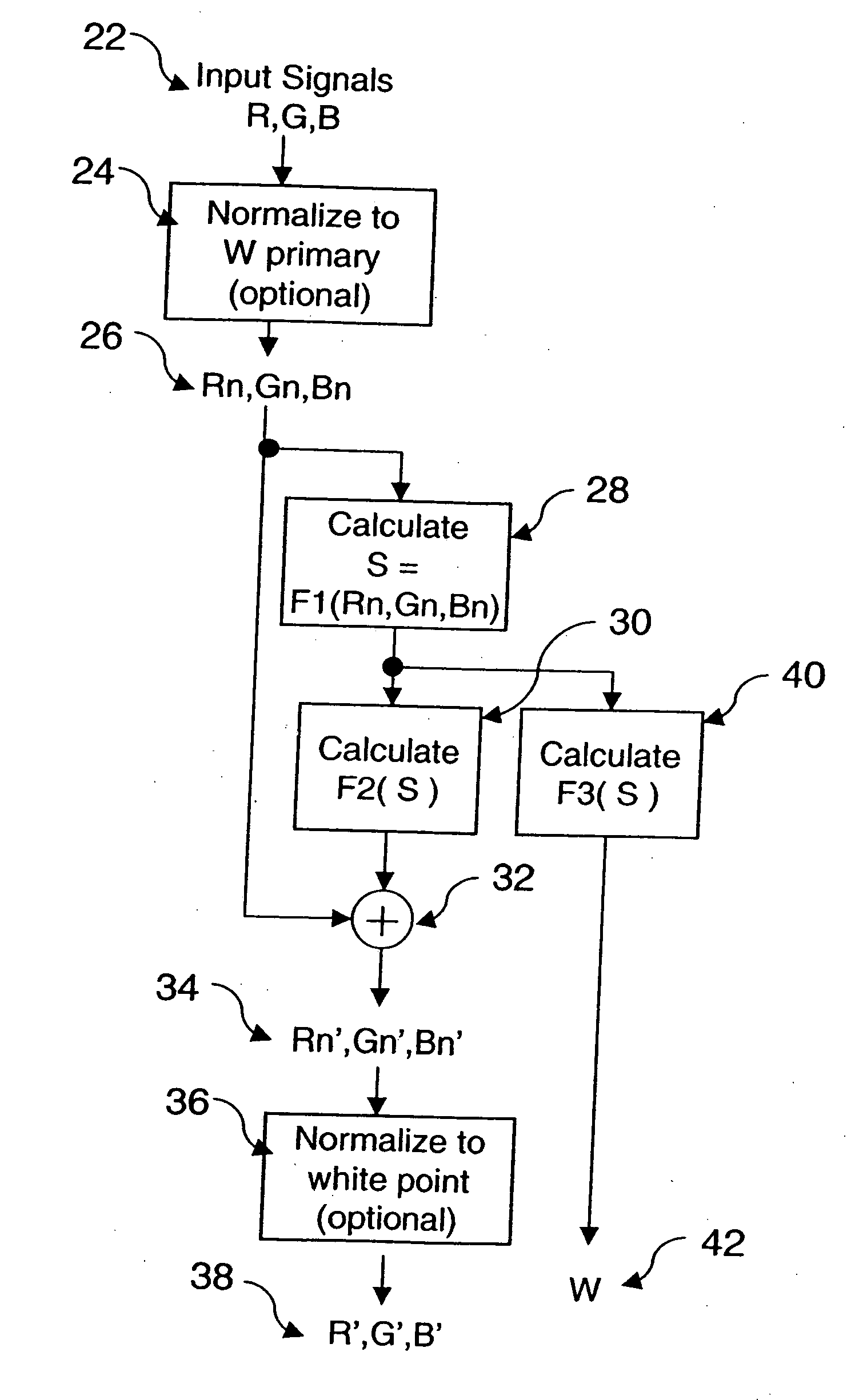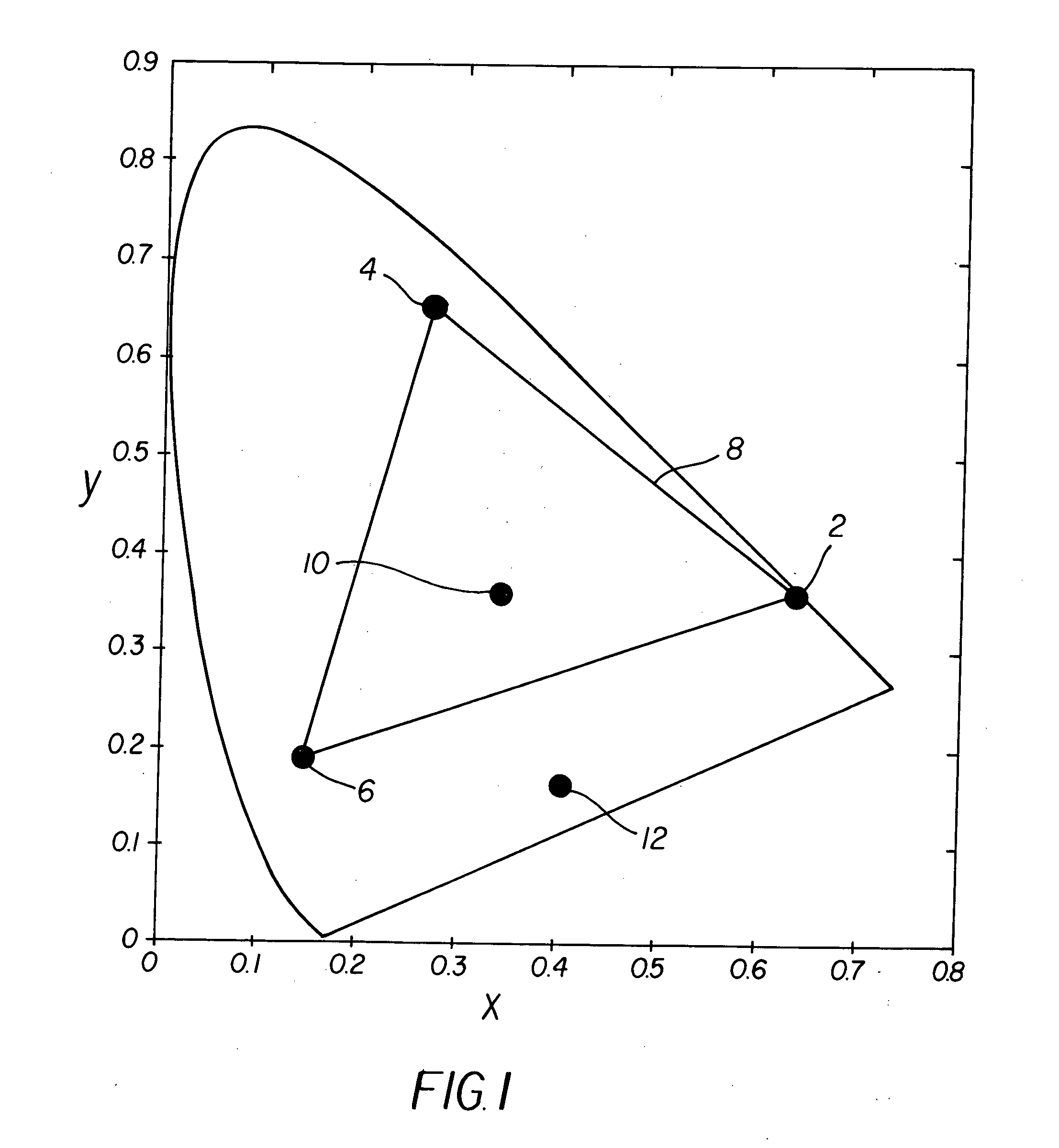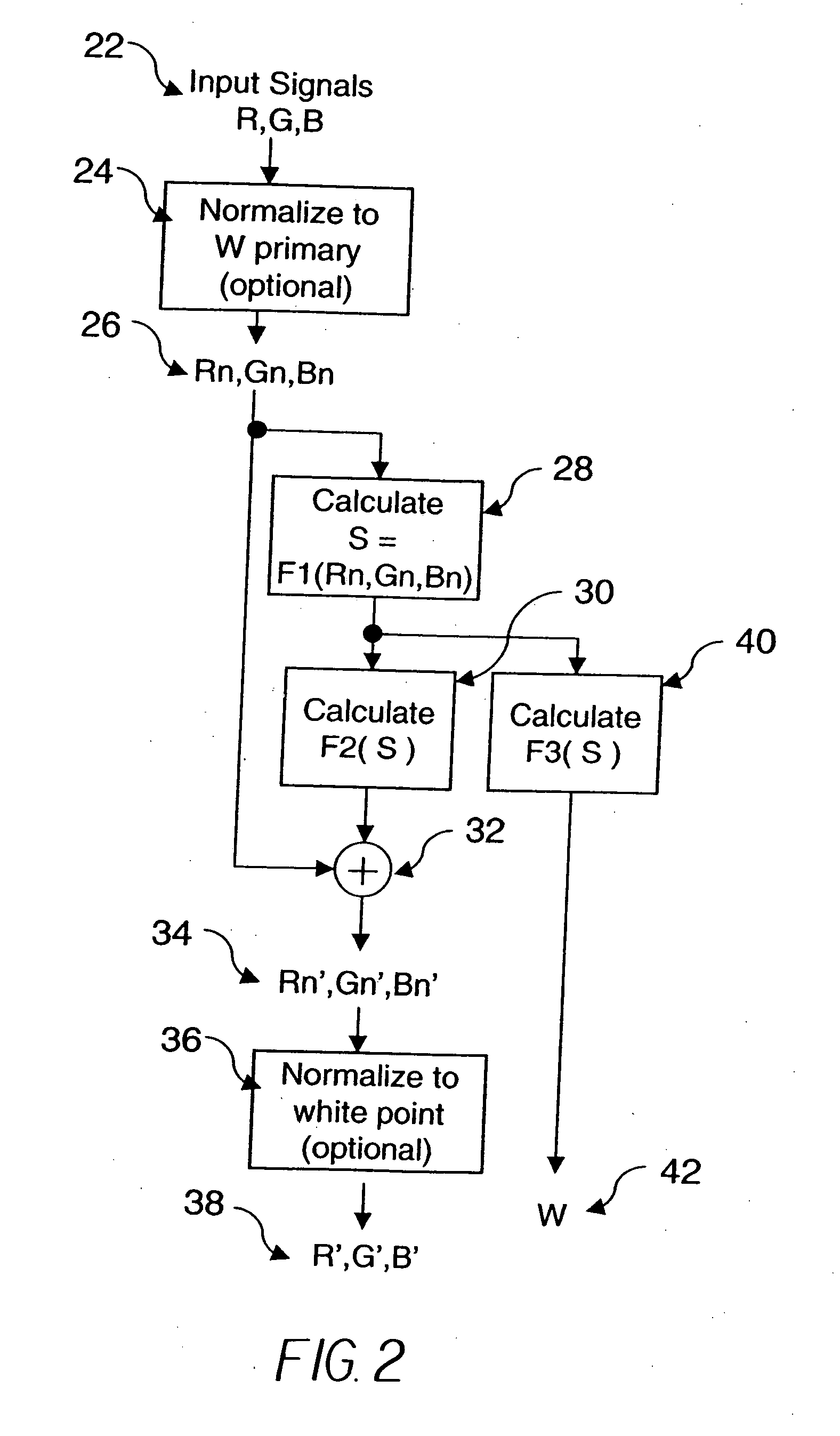Method for transforming three colors input signals to four or more output signals for a color display
a color display and input signal technology, applied in the field of color processing three color image signals for display, can solve the problems of color errors, loss of color saturation, simple scaling correction,
- Summary
- Abstract
- Description
- Claims
- Application Information
AI Technical Summary
Benefits of technology
Problems solved by technology
Method used
Image
Examples
Embodiment Construction
[0025] The present invention is directed to a method for transforming three color input signals, bearing images or other data, to four or more color output signals for display on an additive display device having four or more color primaries. The present invention is useful, for example, for converting a 3-color RGB input color image signal that has been sampled for display on a display device having three spatially non-overlapping light emitting elements to a four color signal for driving a four-color OLED display device having pixels made up of light emitting elements that each emit light of one of the four colors.
[0026]FIG. 1 shows a 1931 CIE chromaticity diagram displaying hypothetical representations of the primaries of the four-color OLED display device. The red primary 2, green primary 4, and blue primary 6 define a color gamut, bounded by the gamut defining triangle 8. The additional primary 10 is substantially white, because it is near the center of the diagram in this exa...
PUM
 Login to View More
Login to View More Abstract
Description
Claims
Application Information
 Login to View More
Login to View More - R&D
- Intellectual Property
- Life Sciences
- Materials
- Tech Scout
- Unparalleled Data Quality
- Higher Quality Content
- 60% Fewer Hallucinations
Browse by: Latest US Patents, China's latest patents, Technical Efficacy Thesaurus, Application Domain, Technology Topic, Popular Technical Reports.
© 2025 PatSnap. All rights reserved.Legal|Privacy policy|Modern Slavery Act Transparency Statement|Sitemap|About US| Contact US: help@patsnap.com



